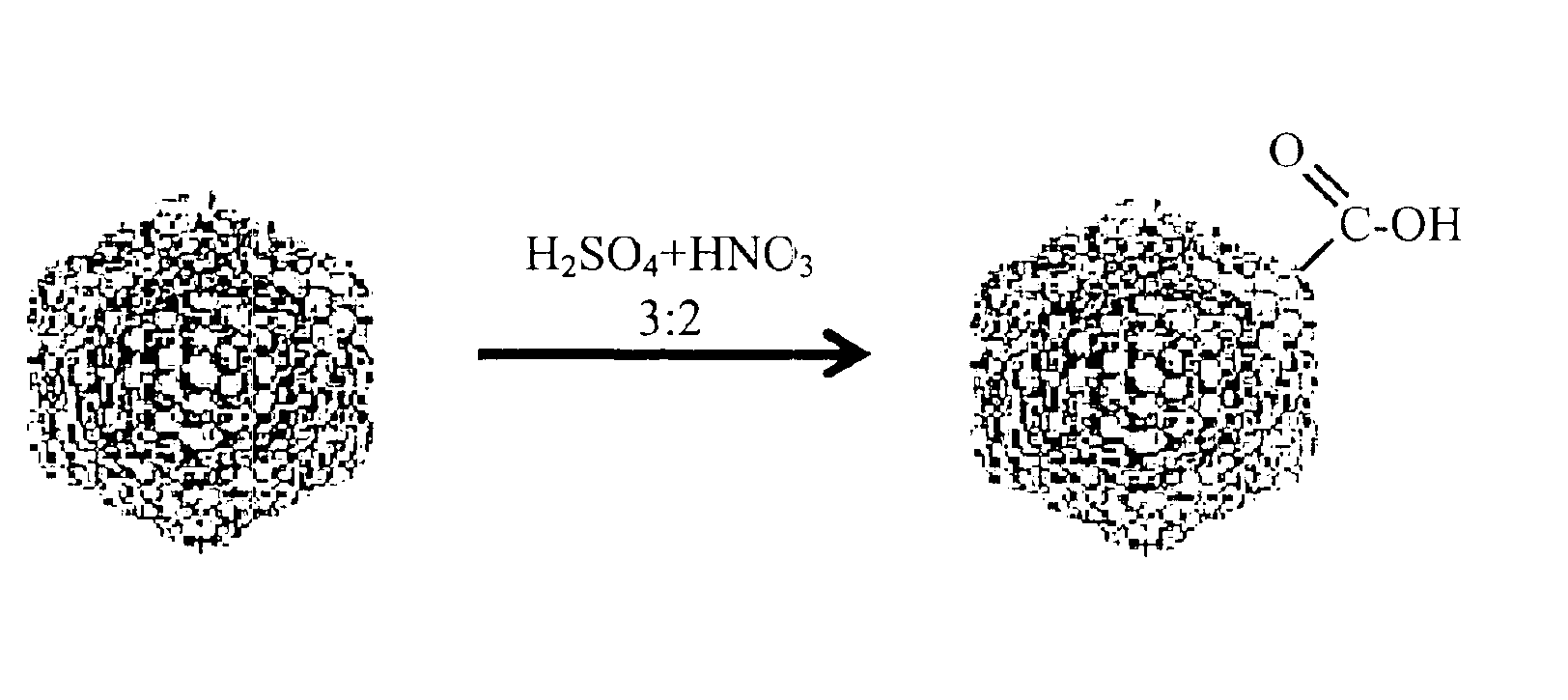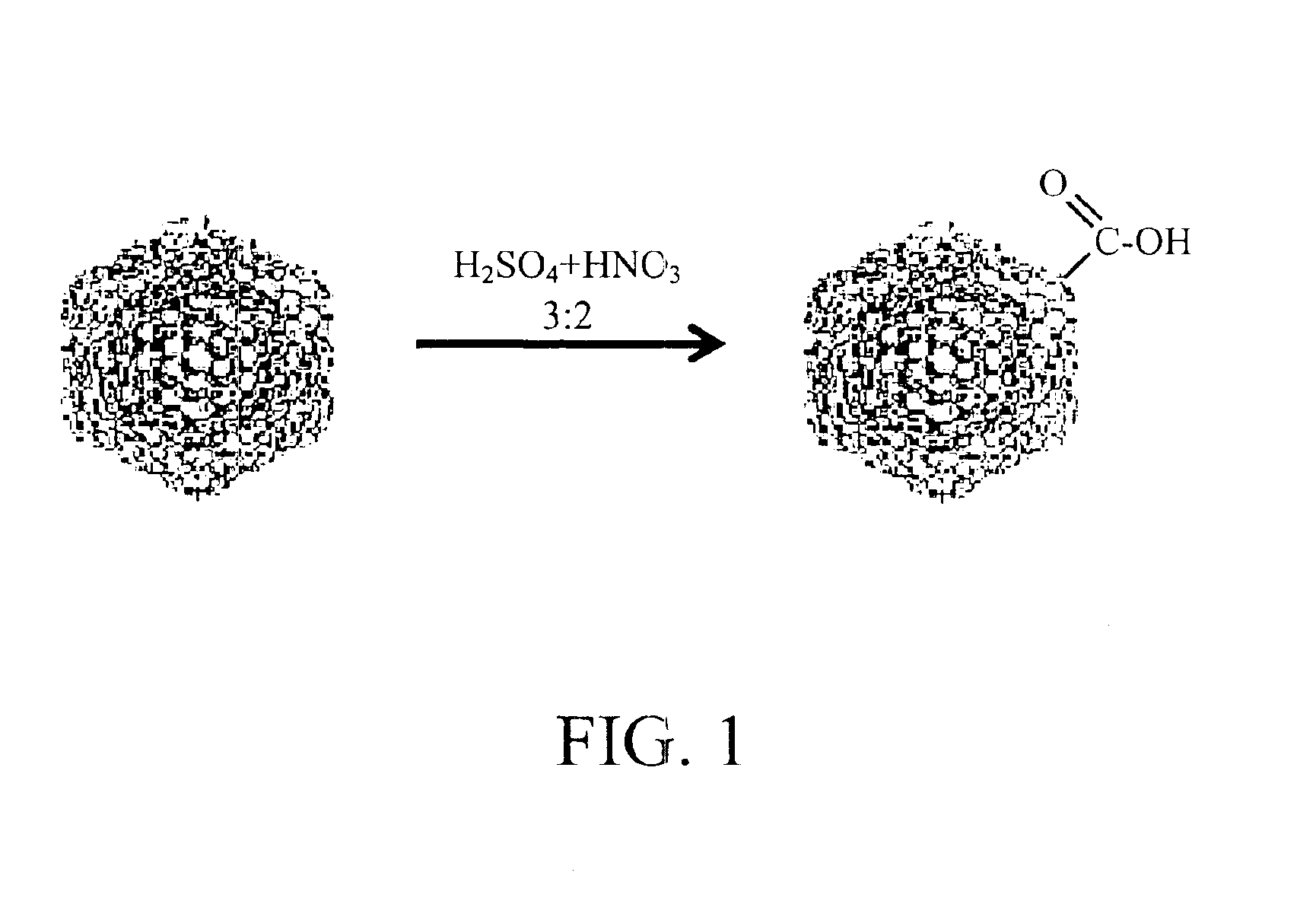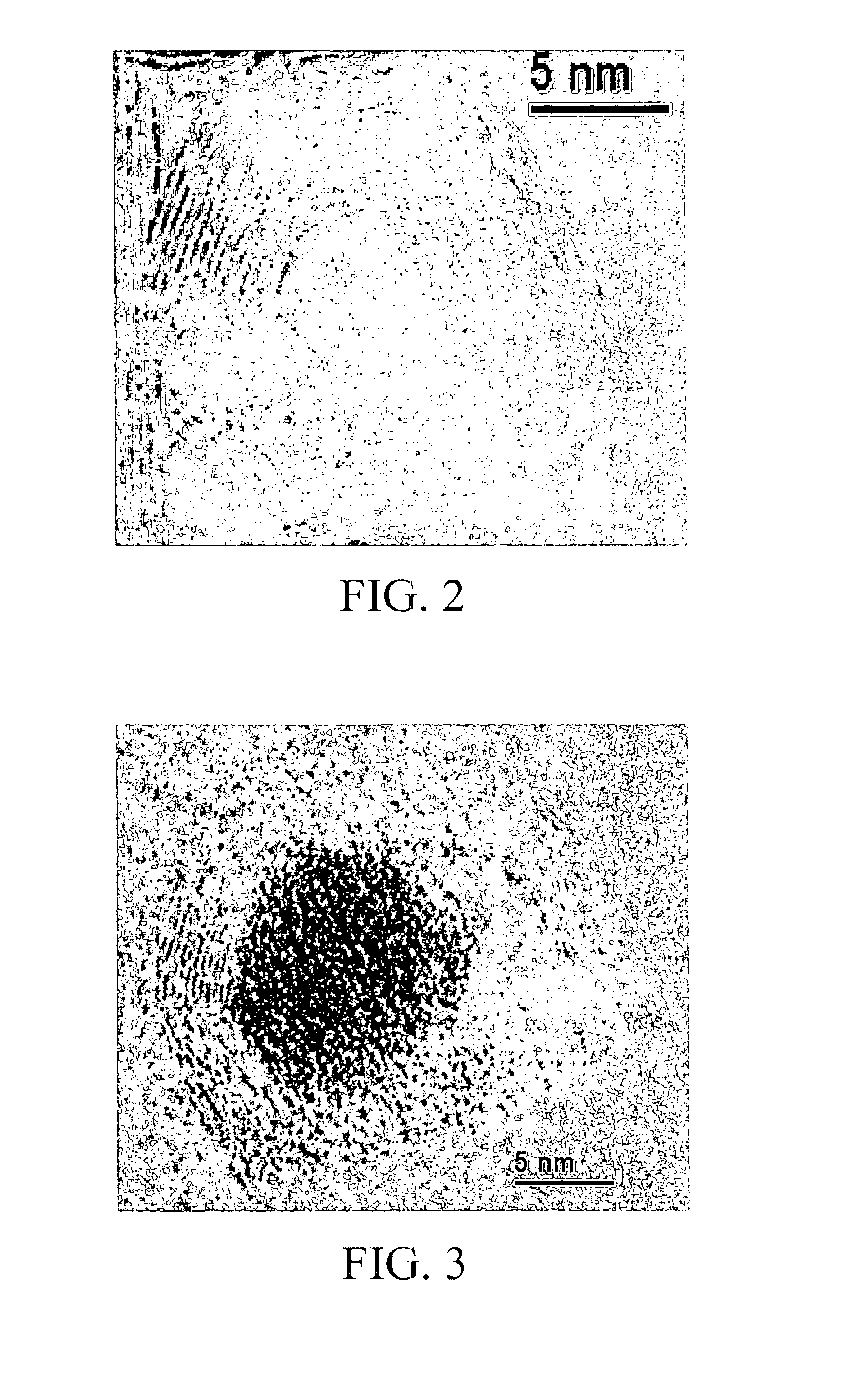Carbon nanocapsule supported catalysts
a technology of carbon nanotubes and catalysts, applied in the field of carbon nanotubes, can solve the problems of limited application, carbon nanotubes are not easily isolated from carbon nanotubes, and studies regarding the use of carbon nanotubes as catalyst supports, etc., and achieve the effect of advancing the development of catalyst technology
- Summary
- Abstract
- Description
- Claims
- Application Information
AI Technical Summary
Benefits of technology
Problems solved by technology
Method used
Image
Examples
embodiment
In the embodiment, hollow carbon nanocapsules and Tb-filled carbon nanocapsules were prepared as catalyst support for Pt particles.
As in FIG. 1, hollow carbon nanocapsules were first functionalized.
A reaction flask (1L) was charged with hollow carbon nanocapsules (10 g) dissolved in 500 ml sulfuric acid / nitric acid (volume ratio=1:1). The mixture was stirred by an ultrasonic cleaner for 10 mins, and then heated to about 140° C. and refluxed for 2 hours. Afterwards, the mixture was centrifuged to separate the carbon nanocapsules from the strong acid, rinsing the carbon nanocapsules thoroughly followed by several centrifuges, until the pH value of carbon nanocapsules approached 7. The carbon nanocapsules obtained were black with —COOH groups bonded thereon. By titration using NaOH, the concentration of the —COOH groups was identified as 13 μmols / per gram carbon nanocapsules.
FIG. 2 shows the carboxyl-group-functionalized carbon nanocapsule by TEM observation. It is shown that the oxida...
PUM
| Property | Measurement | Unit |
|---|---|---|
| Diameter | aaaaa | aaaaa |
| Diameter | aaaaa | aaaaa |
| Nanoscale particle size | aaaaa | aaaaa |
Abstract
Description
Claims
Application Information
 Login to View More
Login to View More - R&D
- Intellectual Property
- Life Sciences
- Materials
- Tech Scout
- Unparalleled Data Quality
- Higher Quality Content
- 60% Fewer Hallucinations
Browse by: Latest US Patents, China's latest patents, Technical Efficacy Thesaurus, Application Domain, Technology Topic, Popular Technical Reports.
© 2025 PatSnap. All rights reserved.Legal|Privacy policy|Modern Slavery Act Transparency Statement|Sitemap|About US| Contact US: help@patsnap.com



